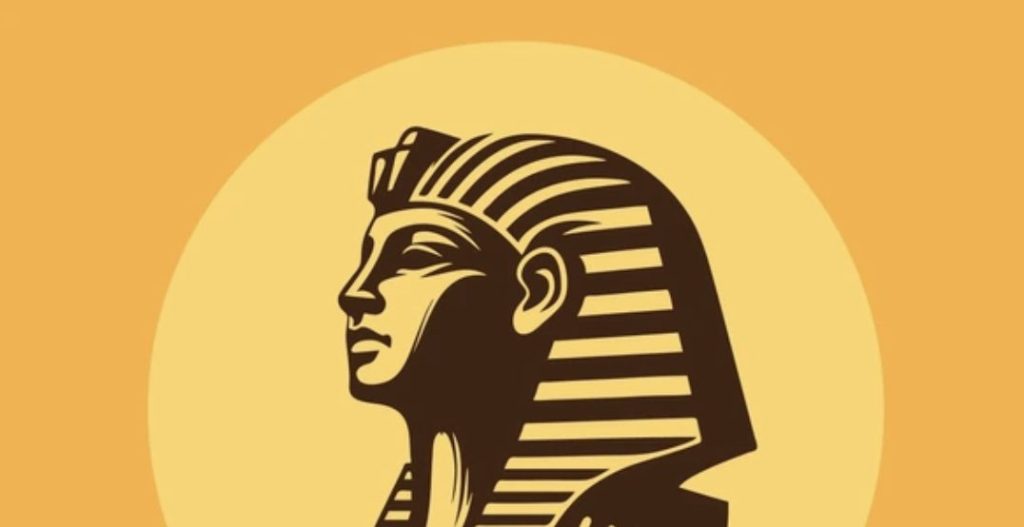Ever felt that rush when you see a brand mark that just clicks? There’s a strange magnetism—a pull that feels as if there’s more than meets the eye. Often, that secret sauce lies in time-tested imagery, the kind people used centuries (or even millennia) ago. Ancient symbols weren’t just random doodles on cave walls. They were loaded with meaning, tapped into primal emotions, and told entire stories using just a few lines or shapes.
No, I’m not suggesting we all transform our logos into hieroglyphic mashups. But think about it: if these ancient emblems have guided societies, religions, and entire civilizations, maybe there’s something we can borrow for modern branding. And here’s the kicker: you don’t have to be a historian or an archaeologist to sense their power. A circle, a spiral, or a hand-drawn creature can be enough to ignite a feeling that’s strangely familiar—like a half-forgotten dream you can’t quite place.
So how do we harness this ancient wisdom without turning our brands into museum pieces? Let’s dig into the heart of the matter. Get ready for a wild ride that loops back and meanders (the way the human mind often does), because real creativity isn’t a linear equation. It’s messy, unpredictable, and sometimes far from perfect. That’s exactly what makes it beautiful.
Why Do Ancient Symbols Still Matter for Modern Logo Designers?
It’s easy to dismiss ancient motifs as relics of an era that had no smartphones, no social media, no anything. But hold on—people back then understood symbolism better than many of us do today. You’ll see the same recurring images in places as distant as ancient Egypt, Native American territories, and the Celtic highlands. A spiral, for example, wasn’t just a spiral. It hinted at cycles of life, rebirth, energy flow. These ideas are universal. Everyone feels them deep down.
Imagine walking into a corporate lobby and seeing a logo that vaguely reminds you of a spiral. You might not consciously know why, but something about it feels grounding. That’s the magic. You tap into a shared human experience that transcends time and geography. Don’t underestimate that. There’s a reason successful global brands sometimes root themselves in shapes or icons you’d see on ancient pottery.
Think about the Nike swoosh. It’s not exactly an ancient symbol, but it’s reminiscent of a wing—like the Greek goddess Nike’s wings. Whether you realize it or not, it captures a sense of speed and divine victory that’s baked into our cultural psyche. The result? A brand that feels both modern and timeless.
How to Discover the Core Story Behind Your Logo
Logos aren’t just pretty marks on your website. They hold the essence of your brand’s story in a single, simplified image. If you’re going to sprinkle in some ancient wisdom, you first need to figure out what your core story is. Do you stand for hope and renewal? Maybe you identify with a phoenix, that legendary bird that rises from ashes. Or if your brand is about protection and guidance, an eye or a shield might be more your vibe.
You can see how this plays out in everyday life when businesses pick animals—like an owl for wisdom or a lion for courage. But don’t settle for clichés. Dig deeper. Ask yourself, “What exactly am I trying to say that words alone can’t capture?” Sometimes, it’s not an animal at all—it might be a geometric shape or a stylized silhouette.
Side note: People rarely think about how deeply personal a brand identity can be. When you get it right, it’s like a badge of honor, something you wear proudly. When you pick an ancient emblem or motif, you’re connecting with a tapestry of human storytelling. That’s a big deal. Treat it with respect.
Which Timeless Elements Work Best in Contemporary Logos?
One thing that often gets overlooked is this: simplicity matters. Even in ancient times, the most enduring symbols were rarely cluttered. Think about the geometric lines in Aztec art or the minimalist patterns in tribal tattoos. Humans respond to shapes they can grasp in a heartbeat. A circle might signal completeness, while a triangle often speaks to stability or direction.
So, what’s the trick? Keep it clean. If you’re pulling from, say, the Celtic knot, you might focus on a single loop or a particular curve instead of reproducing the entire, intricate pattern. You want a mark that can scale from the size of a billboard to a tiny social media avatar. Ancient cultures understood that power often lies in clarity.
Here’s a side note that might surprise you: big-name designers often look to art history (or even prehistoric cave drawings) for inspiration. They might not admit it out loud, but those shapes and lines offer a rawness that modern design sometimes forgets. By the way, if your brand is cutting-edge tech, you can still use an ancient symbol to evoke timelessness. It’s that blend of old and new that sparks curiosity.
Should You Mix and Match Different Historical Symbolisms?
Ever watch a movie where they throw Norse runes, Egyptian ankhs, and maybe a few Greek letters into one big pot? It can get messy. That doesn’t mean you can’t do it—it just means you have to know what each piece stands for. If you blend them haphazardly, you risk confusion. But if you do it with intention, you might end up with a design that tells a layered story.
What’s even more surprising is how some brands do this stealthily. A single line might reference Japanese calligraphy, while the overall shape hints at Aboriginal dot painting. It’s subtle, barely noticeable, but it creates a sense of global unity. Then again, you don’t want to dip into cultural appropriation territory. Always approach historical emblems with respect. Research them, understand their significance, and figure out if you have a real connection to that culture’s artistry.
Remember, you can’t please everyone. Some folks might say, “That Greek motif doesn’t belong on a product sold in North America!” But that’s where artistry meets commerce. If your brand’s story authentically ties into multiple traditions, go for it. Just make sure the result is cohesive and not a random quilt of unrelated symbols.
How to Dodge Common Pitfalls When Incorporating Ancient Icons
Something people rarely think about is the baggage that certain symbols carry. A swastika in ancient Hindu culture was a sign of good fortune, but in the Western world, it’s now associated with atrocities. So do your homework. Even less controversial symbols might have context you’re unaware of. The last thing you want is to offend or alienate people because you didn’t research thoroughly.
Another thing people forget: not every symbol is a universal fit. The Eye of Horus might look cool, but does it resonate with your brand’s story? Don’t just pick something because it’s “exotic.” If it doesn’t align with your message, it’ll feel forced. And trust me, audiences pick up on forced branding like a dog sniffing out a hidden treat.
On top of that… watch out for design complexity. Some ancient emblems are gorgeous but extremely detailed. Today’s marketing channels—think social media icons, mobile apps—thrive on minimalistic imagery. You might need to refine or stylize that labyrinth or mandala so it reads clearly at a smaller scale.
Tips for Giving Your Brand a Lasting Impact
It might sound crazy, but the moment you start pulling inspiration from ancient times, you might boost creative productivity in ways you never expected. There’s a sense of tapping into a broader narrative, a continuum that’s bigger than your own brand. It’s almost spiritual, in a way, because you’re connecting with human expressions that have spanned centuries.
Of course, you can’t just rely on mystical vibes. At some point, the rubber meets the road: your brand has to stand out in a crowded market. And guess what? Sometimes the best route is to go deeper into your brand’s roots. Is there a local legend in your hometown that could spark an idea? Could the shape of a historical landmark in your region become part of your logo? That personal tie-in can make your brand feel grounded and relatable.
One last plot twist you might not see coming: data also plays a role. Even the most heart-driven project can benefit from real-world feedback. And if you think your brand has nothing to do with ancient motifs, let me share a surprising tip: Ad Data often shows that designs referencing cultural or historical elements spark higher engagement. People tend to pause and ask, “What does that symbol mean?” Engagement means retention, and retention can lead to loyalty.
Where Do We Go from Here?
You might still wonder if ancient symbols are too big of a leap for your modern, tech-focused brand. Maybe you’re picturing your target audience shaking their heads at an archaic symbol on your packaging. But honestly, folks connect with authenticity—and ancient symbols, when used with care, resonate as deeply authentic. They whisper that your brand has depth, that you’re speaking to the human condition in a way that goes beyond mere trendiness.
Take a moment to recall some logos or brand marks that stuck with you. Was it the Apple logo (a simple fruit with a bite taken out)? Possibly the Starbucks mermaid, borrowed from old nautical woodcuts? Or even the CBS eye, which feels oddly reminiscent of the ancient Egyptian Eye of Ra? These examples all prove one thing: a dash of historical or mythic symbolism can make an image unforgettable.
Not only that… you can still experiment without going full-on “Indiana Jones.” Maybe just a subtle line in your typography, a swirl at the edge of your icon. The goal is to add that layer of meaning people might not even notice consciously. But trust me, they’ll feel it. Art has this amazing capacity to bypass our logical brain and go straight for the emotions. That’s what a truly powerful logo does: it speaks to you before you can even put the feeling into words.
All this begs the question: how do you want people to feel about your brand? If the answer involves depth, mystery, or a sense of legacy, ancient imagery might be your perfect companion. You can refine, reshape, and modernize it so it fits seamlessly into your design language. The ultimate payoff? A logo that stands the test of time—much like the symbols that inspired it.
At the end of the day, ancient cultures left us a treasure trove of artistry and symbolism. We’d be missing out if we ignored that wealth of inspiration. So take a chance. Explore a timeless icon, see how it resonates with your brand’s story, and let it guide you. You never know: the next big trend in design might actually be thousands of years old. And isn’t that mind-blowing to consider?



